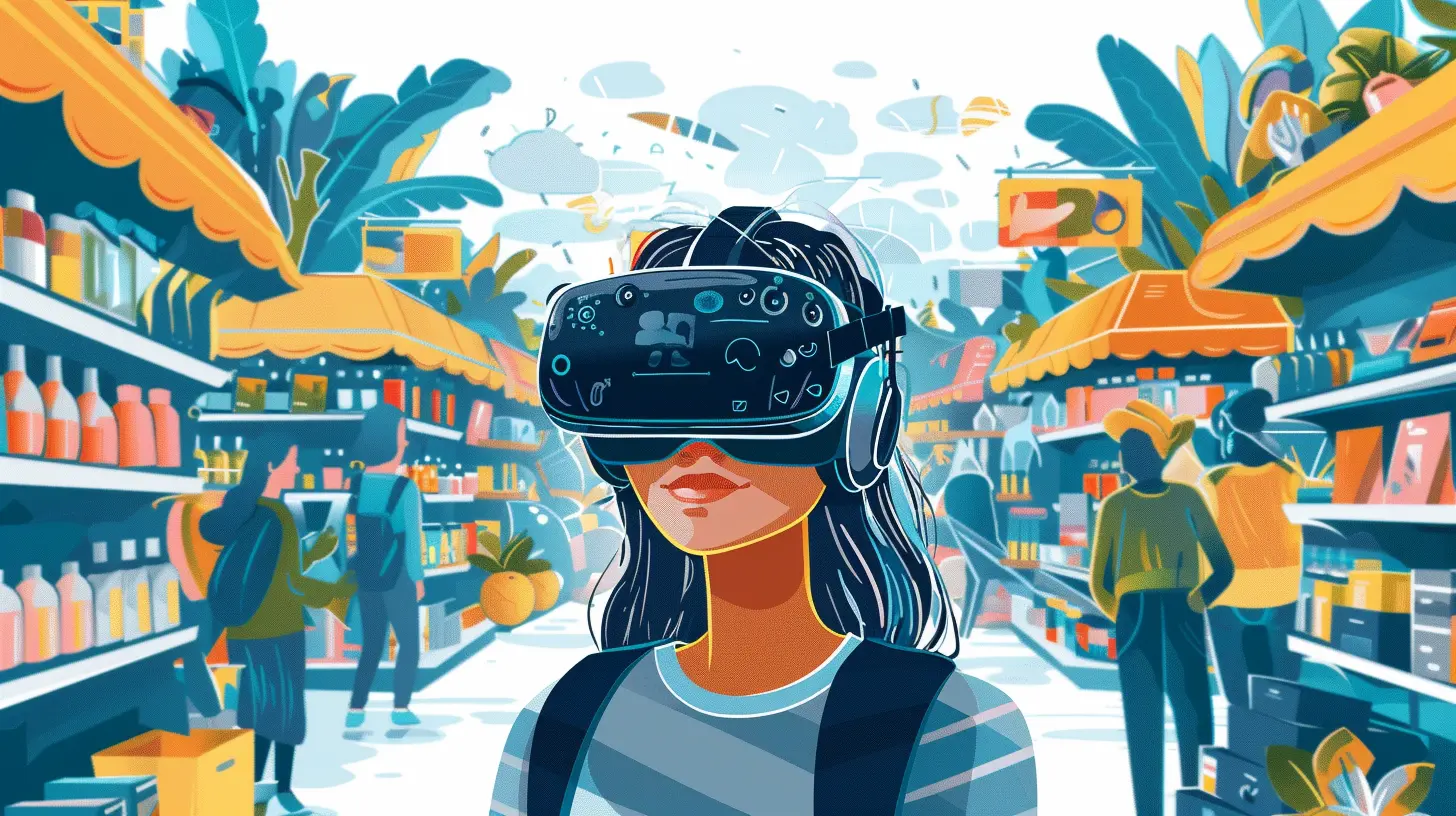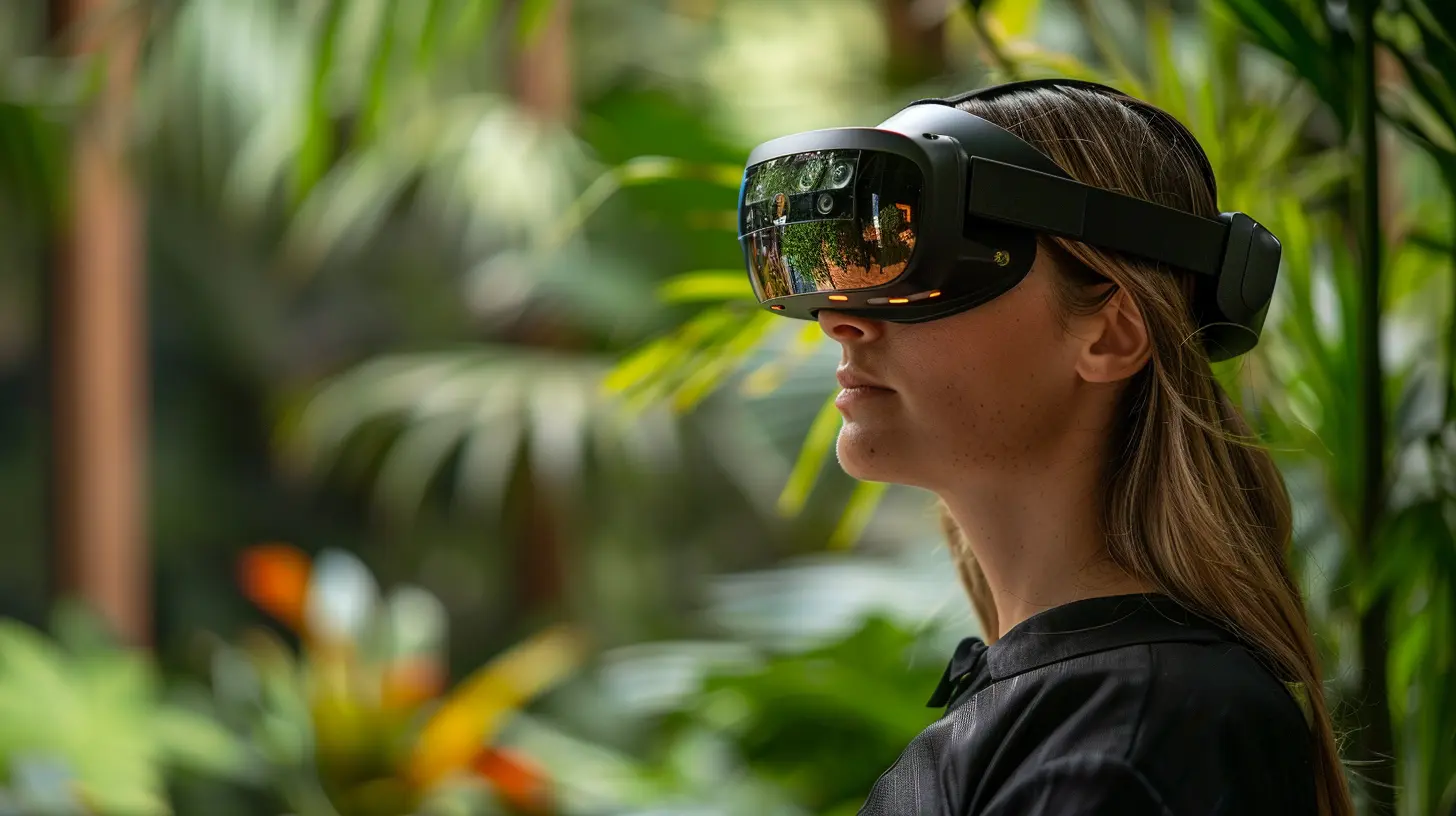7 March 2025
Imagine walking into a store, but instead of wandering aimlessly, you put on a pair of glasses or whip out your phone, and suddenly, the entire shop experience transforms. Shelves come to life, products are tailored to your preferences, and virtual assistants guide you through every step of your shopping journey. Sounds futuristic, right? Well, welcome to the world of Augmented Reality (AR) in retail. It’s not just a buzzword anymore; it’s a game-changer that’s revolutionizing how customers engage with brands.
Retailers worldwide are cashing in on AR to create immersive, interactive, and highly personalized experiences that keep customers coming back for more. Think of it as the bridge between the physical and digital worlds, blending real-life shopping with virtual elements to elevate customer engagement to new heights.
But how exactly is AR shaking up the retail industry? Let’s dive into how this technology is reshaping customer experiences and why it’s here to stay.

What is Augmented Reality?
Before we get into how AR is transforming retail, let’s clear up what we mean by augmented reality. AR overlays digital information—like images, sounds, or data—onto the real world. Unlike virtual reality (VR), which creates an entirely new environment, AR enhances your current environment by adding virtual elements to it. It’s like layering a digital filter over your actual surroundings.If you’ve ever used filters on Instagram or played Pokémon GO, you’ve already experienced a form of AR. But when it comes to retail, it’s much more than just fun and games. Retailers are using AR to create interactive shopping experiences that are changing how we shop, both online and in physical stores.

The Rise of AR in Retail
Retail has always been about creating memorable experiences. In the past, this meant fancy window displays, great customer service, or maybe an eye-catching store layout. But in today’s digital-first world, those tactics aren’t enough. Customers expect more. They want convenience, personalization, and, most importantly, engagement.Enter AR.
AR provides a way to offer all of this in a single experience. It allows retailers to engage with customers in a way that’s not only fun but also practical. Imagine trying on clothes without stepping into a fitting room or visualizing how a couch would look in your living room before you hit “buy.” AR makes all of this possible, and more.

How AR is Elevating Customer Engagement in Retail
Okay, so we’ve established that AR is cool. But how does it really enhance customer engagement? Let’s break down the key ways.1. Virtual Try-Ons
Trying on clothes or makeup in-store can be a hassle. You’ve got to deal with long lines for fitting rooms, and if you’re shopping online, the risk of ordering something that doesn’t fit or look right is real. AR solves this by offering virtual try-ons.With AR-enabled apps, customers can see how clothes, accessories, or even makeup will look on them without physically trying them on. For example, beauty brands like Sephora have adopted AR in their apps, allowing users to see how different shades of lipstick or eyeshadow will look on their faces. Likewise, clothing brands like ASOS and Zara offer virtual fitting rooms where users can try on outfits digitally.
This not only makes the shopping process smoother but also increases customer satisfaction. Fewer returns? Yes, please!
2. Interactive Product Demos
Ever walked into a store, stared at a gadget, and thought, "I wonder how this thing works?" AR can answer that question in real-time. Rather than reading a lengthy product description or watching a demo video, customers can use AR to interact with products directly.Take IKEA, for instance. Their AR app allows users to visualize how furniture will look and fit in their own space. You simply point your phone at the room, and voila—there’s that couch you’ve been eyeing, perfectly placed in your living room. This type of interactive demo can significantly boost customer confidence and make the shopping experience more engaging.
3. Enhanced In-Store Experiences
Physical stores aren’t going anywhere, but they are evolving. AR is giving brick-and-mortar stores a fresh new twist. Some retailers are using AR to provide customers with an enhanced shopping experience by offering virtual guides or personalized suggestions as they walk through the store.Imagine walking down the aisle of your favorite store, and your phone alerts you to exclusive discounts on products you’re likely to be interested in based on your past purchases. Or maybe you're shopping for groceries, and your phone helps you quickly find the ingredients for that dinner recipe you’ve been meaning to try. AR can make all of this happen, turning your routine shopping trip into a personalized adventure.
4. Gamification of Shopping
Who doesn’t love a good game? AR allows retailers to gamify the shopping experience, making it both fun and rewarding. For instance, some brands create scavenger hunts within their stores, where customers can use AR to find hidden virtual objects in exchange for discounts or rewards.Gamification not only keeps customers engaged but also encourages them to spend more time in the store or on the brand’s app. It’s a win-win situation: customers get a more enjoyable shopping experience, while retailers benefit from increased customer interaction and potentially higher sales.
5. Personalized Shopping Experiences
In today’s retail landscape, personalization is key. AR allows brands to create hyper-personalized experiences for their customers. Whether it’s suggesting products based on your preferences or offering virtual styling tips, AR can tailor the shopping experience to each individual.For example, some AR apps analyze your past purchases and browsing habits to recommend products you’re likely to love. The more you shop, the smarter the system becomes, ensuring that the suggestions are always on point.
This level of personalization not only enhances customer engagement but also fosters brand loyalty. When customers feel understood and valued, they’re more likely to keep coming back.

The Benefits of AR for Retailers
While AR is undoubtedly a hit with customers, it’s also a major win for retailers. Here’s why:- Increased Customer Engagement: AR keeps customers entertained and engaged, whether they're shopping in-store or online. Engaged customers are more likely to make a purchase and return for future shopping trips.
- Reduced Returns: Virtual try-ons and product visualizations help customers make more informed buying decisions, resulting in fewer returns and exchanges.
- Differentiate from Competitors: In an increasingly crowded market, AR gives brands a way to stand out. Offering an innovative, tech-forward shopping experience can set a retailer apart from the competition.
- Boosts Online Shopping Confidence: One of the main drawbacks of online shopping is the inability to see, feel, or try on products before buying. AR bridges this gap by allowing customers to interact with products virtually, giving them more confidence in their purchases.
- Enhanced Data Collection: AR tools can collect valuable data about customer preferences and behaviors, which can help retailers refine their marketing strategies and improve product offerings.
Challenges of Implementing AR in Retail
Of course, no technology is without its challenges. While AR in retail has tons of potential, there are a few hurdles to consider:- Cost of Development: Developing and maintaining AR technology can be expensive, especially for smaller retailers. It requires specialized knowledge, tools, and ongoing updates to keep the experience seamless and bug-free.
- Customer Adoption: While AR is growing in popularity, not all customers are familiar with it or comfortable using it. Retailers will need to invest in educating their customers about how to use AR features effectively.
- Compatibility Issues: Not all devices are AR-compatible, and some customers may not have access to the latest smartphones or AR-enabled gadgets, which could limit the technology's reach.
- Data Privacy Concerns: With AR collecting data to create personalized experiences, retailers must ensure that they are protecting customer information and complying with data privacy regulations.
The Future of AR in Retail
So, where’s AR headed in the retail world? The future looks incredibly bright. As AR technology becomes more advanced and accessible, we can expect even more seamless integrations into our shopping experiences. Think smart mirrors in fitting rooms, fully immersive virtual stores, and even AR-powered customer service bots.Retailers that embrace AR early on will undoubtedly have a competitive edge, offering customers innovative, interactive, and personalized shopping experiences. And as customer expectations continue to evolve, AR will be a key player in meeting those demands.
Final Thoughts
Augmented reality is no longer just a novelty—it’s a powerful tool that’s transforming the retail landscape. By offering virtual try-ons, interactive product demos, gamified experiences, and personalized shopping journeys, AR is elevating customer engagement like never before.Sure, there are challenges to implementing the technology, but the benefits far outweigh them. Retailers that invest in AR today are setting themselves up for success in the future, creating shopping experiences that are not just convenient, but also engaging and memorable.
So, the next time you’re shopping online or in-store and see AR in action, take a moment to appreciate how it’s changing the game. Retail isn’t just about buying stuff anymore—it’s about the experience, and AR is making that experience better than ever.














Maria McKnight
Augmented reality in retail is a game changer, transforming how customers interact with products and enhancing their shopping experience beyond traditional methods.
April 6, 2025 at 11:46 AM